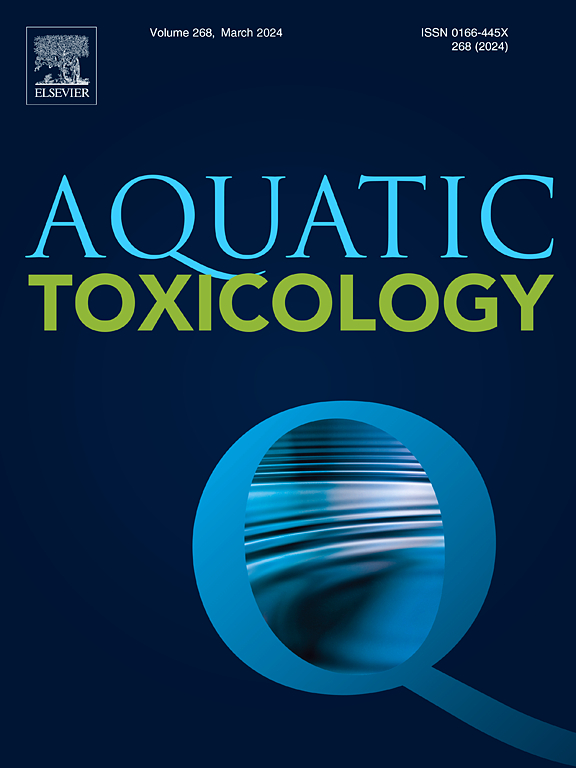Automated counting and classifying Daphnia magna using machine vision
IF 4.1
2区 环境科学与生态学
Q1 MARINE & FRESHWATER BIOLOGY
引用次数: 0
Abstract
Daphnia magna (D. magna) is a model organism widely used in aquatic ecotoxicology research due to its sensitivity to environmental changes. The survival and reproduction rates of D. magna are easily affected by toxic environments. However, their small size, fragility, and transparency, especially in neonate stages, make them challenging to count accurately. Traditionally, counting adult and neonate D. magna relies on manual separation and visual observation, which is not only tedious but also prone to inaccuracies. Previous attempts to aid counting with optical sensors have faced issues such as inducing stress damage due to vertical movement and an inability to distinguish between adults and neonates. With the advancement of deep learning technologies, our study employs a simple light source culture device and utilizes the Mask2Former model to analyze D. magna against the background. Additionally, the U-Net model is used for comparative analysis. We also applied OpenCV technology for automatic counting of adult and neonate D. magna. The model's results were compared against manual counting performed by experienced technicians. Our approach achieves an average relative accuracy of 99.72 % for adult D. magna and 98.30 % for neonate. This method not only enhances counting accuracy but also provides a fast and reliable technique for studying the survival and reproduction rates of D. magna as a model organism.
利用机器视觉对大型水蚤进行自动计数和分类。
大型蚤(D. magna)因其对环境变化的敏感性而成为水生生态毒理学研究中广泛使用的模式生物。大型蚤的存活率和繁殖率很容易受到有毒环境的影响。然而,由于其体型小、易碎、透明度低,尤其是在新生阶段,因此很难对其进行准确计数。传统上,对成体和新生幼体的计数主要依靠人工分离和肉眼观察,不仅繁琐,而且容易出现误差。之前利用光学传感器辅助计数的尝试也面临着一些问题,如垂直运动会导致应力损伤,以及无法区分成体和新生儿。随着深度学习技术的发展,我们的研究采用了一种简单的光源培养装置,并利用 Mask2Former 模型来分析 magna 的背景。此外,我们还使用了 U-Net 模型进行对比分析。我们还应用了 OpenCV 技术对成年和新生大型裸鲤进行自动计数。该模型的结果与经验丰富的技术人员进行的人工计数进行了比较。我们的方法实现了 99.72 % 的成鱼和 98.30 % 的新生儿平均相对准确率。这种方法不仅提高了计数的准确性,还为研究作为模式生物的大型裸鲤的存活率和繁殖率提供了一种快速可靠的技术。
本文章由计算机程序翻译,如有差异,请以英文原文为准。
求助全文
约1分钟内获得全文
求助全文
来源期刊

Aquatic Toxicology
环境科学-毒理学
CiteScore
7.10
自引率
4.40%
发文量
250
审稿时长
56 days
期刊介绍:
Aquatic Toxicology publishes significant contributions that increase the understanding of the impact of harmful substances (including natural and synthetic chemicals) on aquatic organisms and ecosystems.
Aquatic Toxicology considers both laboratory and field studies with a focus on marine/ freshwater environments. We strive to attract high quality original scientific papers, critical reviews and expert opinion papers in the following areas: Effects of harmful substances on molecular, cellular, sub-organismal, organismal, population, community, and ecosystem level; Toxic Mechanisms; Genetic disturbances, transgenerational effects, behavioral and adaptive responses; Impacts of harmful substances on structure, function of and services provided by aquatic ecosystems; Mixture toxicity assessment; Statistical approaches to predict exposure to and hazards of contaminants
The journal also considers manuscripts in other areas, such as the development of innovative concepts, approaches, and methodologies, which promote the wider application of toxicological datasets to the protection of aquatic environments and inform ecological risk assessments and decision making by relevant authorities.
 求助内容:
求助内容: 应助结果提醒方式:
应助结果提醒方式:


